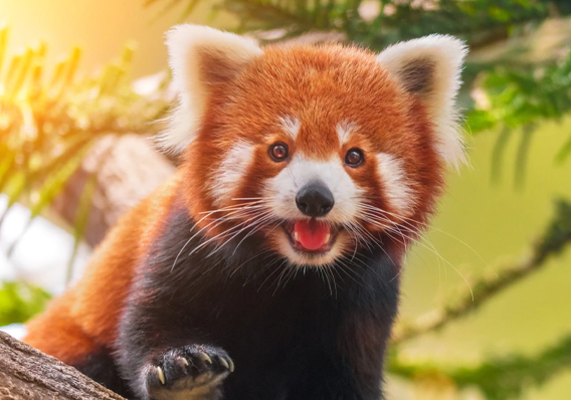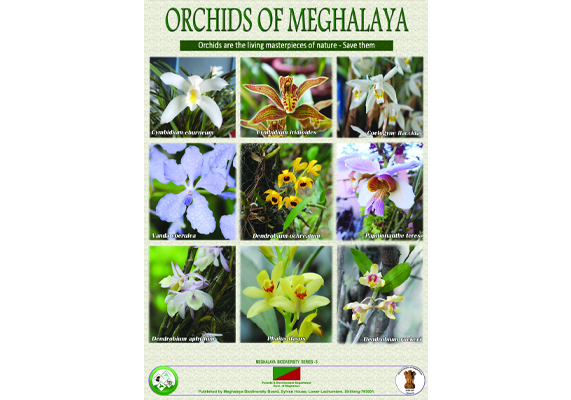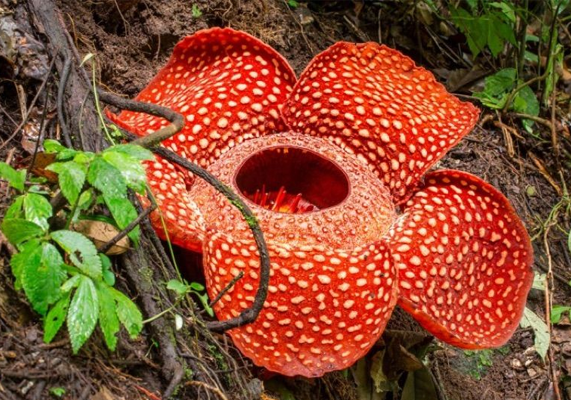Flora and fauna
About 70% of the state is forested, of which 9,496 km2 is dense primary subtropical forest. The Meghalayan forests are considered to be among the richest botanical habitats of Asia. These forests receive abundant rainfall and support a vast variety of floral and faunal biodiversity. A small portion of the forest area in Meghalaya is under what are known as "sacred groves" These are small pockets of an ancient forest that have been preserved by the communities for hundreds of years due to religious and cultural beliefs. These forests are reserved for religious rituals and generally remain protected from any exploitation. These sacred groves harbour many rare plant and animal species. The Nokrek Biosphere Reserve in the West Garo Hills and the Balphakram National Park in the South Garo Hills are considered to be the most biodiversity-rich sites in Meghalaya.[citation needed] In addition, Meghalaya has three wildlife sanctuaries. These are the Nongkhyllem Wildlife Sanctuary, the Siju Sanctuary, and the Baghmara Sanctuary, which is also the home of the insect-eating pitcher plant Nepenthes khasiana also called "Me'mang Koksi" in the Garo language.



Due to diverse climatic and topographic conditions, Meghalaya forests support a vast floral diversity, including a large variety of parasites, epiphytes, succulent plants and shrubs. Two of the most important tree varieties are Shorea robusta (sal tree) and Tectona grandis (teak). Meghalaya is also the home to a large variety of fruits, vegetables, spices, and medicinal plants. Meghalaya is also famous for its large variety of orchids — nearly 325 of them. Of these, the largest variety is found in the Mawsmai, Mawmluh and Sohrarim forests in the Khasi hills.
Meghalaya also has a large variety of mammals, birds, reptiles and insects. The important mammal species include elephants, bear, red pandas, small Indian civets, mongooses, weasels, rodents, gaur, wild buffalo, deer, wild boar and a number of primates. Meghalaya also has a large variety of bats. The limestone caves in Meghalaya such as the Siju Cave are home to some of the nation's rarest bat species. The hoolock gibbon is found in all districts of Meghalaya.
Common reptiles in Meghalaya are lizards, crocodiles and tortoises. Meghalaya also has a number of snakes including the python, copperhead, green tree racer, Indian cobra, king cobra, coral snake and vipers.



Meghalaya's forests host 660 species of birds, many of which are endemic to Himalayan foothills, Tibet and Southeast Asia. Of the birds found in Meghalaya forests, 34 are on worldwide threatened species list and 9 are on the critically endangered list. Prominent birds spotted in Meghalaya include those from the families of Phasianidae, Anatidae, Podicipedidae, Ciconiidae, Threskiornithidae, Ardeidae, Pelecanidae, Phalacrocoracidae, Anhingidae, Falconidae, Accipitridae, Otididae, Rallidae, Heliornithidae, Gruidae, Turnicidae, Burhinidae, Charadriidae, Glareolidae, Scolopacidae, Jacanidae, Columbidae, Psittacidae, Cuculidae, Strigidae, Caprimulgidae, Apodidae, Alcedinidae, Bucerotidae, Ramphastidae, Picidae, Campephagidae, Dicruridae, Corvidae, Hirundinidae, Cisticolidae, Pycnonotidae, Sylviidae, Timaliidae, Sittidae, Sturnidae, Turdidae, Nectariniidae and Muscicapidae. Each of these families has many species. The great Indian hornbill is the largest bird in Meghalaya. Other regional birds found include the grey peacock pheasant, the large Indian parakeet and the common green pigeon. Meghalaya is also home to over 250 species of butterflies, nearly a quarter of all butterfly species found in India.